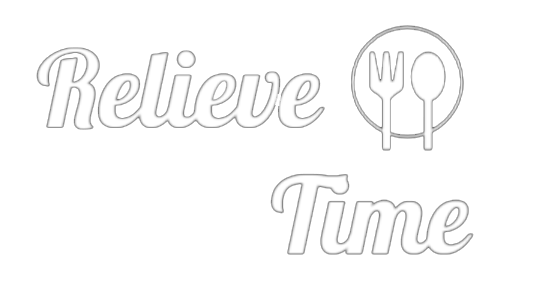7 Things You Should Know About Malört, Chicago’s Much-Maligned Bitter Liqueur
When Carl Jeppson immigrated to Chicago’s Swedish enclave back in the mid-1800s, he brought a controversial beverage that would become synonymous with the city: Jeppson’s Malört. Crafted with wormwood — the same herb behind absinthe — Malört is known for its intensely bitter, bracing flavor profile and has been compared to everything from motor oil and tires to the flavor you’d taste if you bit into a grapefruit like an apple.
It has become the city’s defining drink, but that doesn’t mean it’s meant to sip on. While some say it could be used to cure a gnarly hangover, it’s more often seen as an insider shot for Chicagoans (or served as a not-so-warm welcome to those from out of town). While its strong flavor can be off-putting to some, Malört has gained unexpected popularity across the country in recent years.
As Malört appears behind more bars, here are seven things you should know about the pungent liqueur.
The full ingredient list remains a mystery.
Though we know Malört’s defining ingredient is wormwood, the brand has never shared the liqueur’s full recipe. Just like most other amari and herbaceous spirits, the company doesn’t disclose the full ingredient list because the exact combination of herbs and botanicals is what sets it apart from other bitter spirits. The brand also keeps its wormwood source close to its chest, but is willing to share that it secured a long- term purveyor in northern Europe that produces the “strongest, most unpalatable wormwood.”
Malört’s medicinal qualities helped it skirt Prohibition.
When Jeppson first arrived stateside from Sweden, he began making bäskbrännvin. The Swedish style of bitters is similar to the Malört you can find on shelves today, but Jeppson sold it as a medicinal product. Promoted as a beverage to rid imbibers of stomach worms and other parasites in the body, he conveniently left out the fact that it can give you a little buzz. That clever marketing meant that when Prohibition rolled around in 1920, Malört avoided the ban on booze. Legend has it that Jeppson evaded police scrutiny by telling the cops to take a sip. One taste of the bitter spirit convinced the authorities that no sane person would drink this for fun, so Jeppson could continue selling it on the low.
Malört was once only available in Chicago.
For decades, Malört could only be found in Illinois. The brand first distributed outside the state to Wisconsin in 2013, then added four more states and the District of Columbia to its portfolio five years later. At that time, distribution outside Illinois accounted for only 6 percent of total Malört sales, but as of 2024 that number grew to 37 percent. Now Malört can be found in 33 states and purchased directly from its website in states that allow for online liquor purchases.
But it wasn’t always made in the Second City.
After more than 50 years of production in Chicago, the Mar-Salle Distillery that made and bottled Malört shut down. That left the brand without a producer in Chicago, so Malört production pivoted to Kentucky for two years before landing in Florida where it was made for 30 years. In 2018, CH Distillery purchased Jeppson’s Malört and the Chicago-born beverage was once again made in its hometown.
Locals love to hate it.
With comparisons to gasoline, paint thinner, bygone grapefruit, and pretty much any other unsavory flavor you can imagine, it’s hard for outsiders to understand why Chicagoans love the stuff so much. It comes down to camaraderie. Taking a shot of Malört is a rite of passage, and locals prove their dedication with tattoos, bar crawls, and festivals dedicated to the bottle.
The brand knows it can be hard to swallow.
Malört proudly states that “it’s not a drink for most people, but we’re not most people,” and that unapologetic energy runs through the brand at every level. Malört’s Instagram account is a meme machine with jokes about the brutal taste and photos of “Malört face” that chronicle the twisted-up expression people make after taking a shot. The brand recently took a poll to ask drinkers what they think Malört tastes like and shared the results on Instagram. “If Shag Carpet Could Be Juiced” came out on top, followed by “Liquified Existential Dread” and “Octane Fueled Chicago Gutter Water.” You’ve gotta respect a brand that doesn’t take itself too seriously and leans into that kind of endorsement.
These days, it’s not just for taking shots.
Malört is more than just an iconic shot. Bartenders have embraced the spirit and put it to use in cocktails like the Malört Milk Punch at Printer Row bar Vitalogy. The Weiners Circle, an institution for Chicago-style hot dogs, also offers a cocktail called the Hemingway’s Revenge that pairs rum, grapefruit, lime, and Maraschino liqueur with Malört, so you can try two Chicago staples under one roof. The booze has journeyed beyond the bar as well. The brand recently launched Malört-flavored hard candies, cleverly named “Malört Sucks.” A popular Chicago pie shop, Hoosier Mama, created a spirit-infused dessert called the Chicago Sunrise. And when the popular ice cream chain Van Leeuwen opened in Chicago’s Wicker Park neighborhood, it debuted a limited-time Malört flavor as an ode to the city.
The article 7 Things You Should Know About Malört, Chicago’s Much-Maligned Bitter Liqueur appeared first on VinePair.
